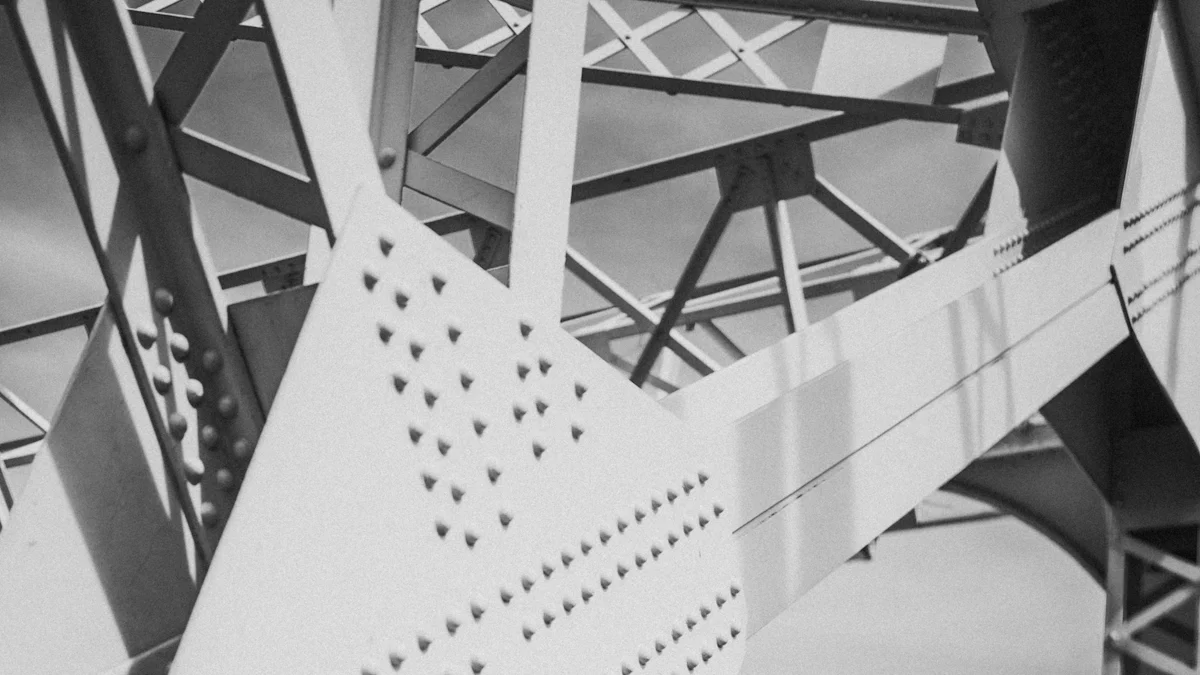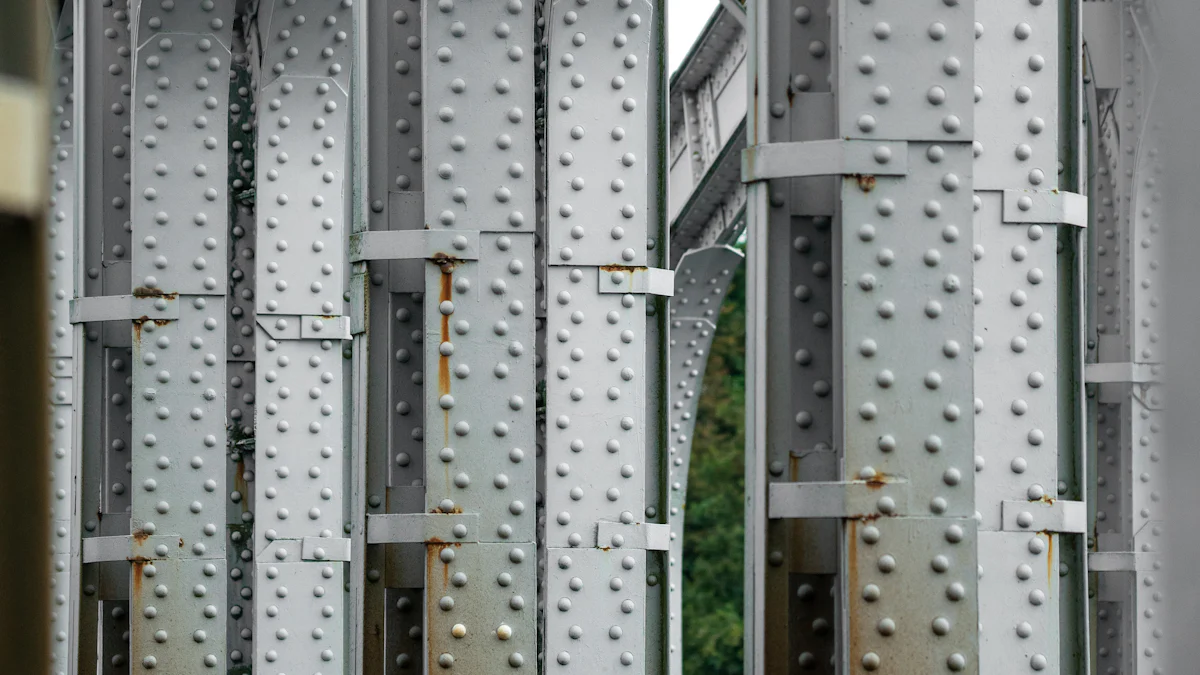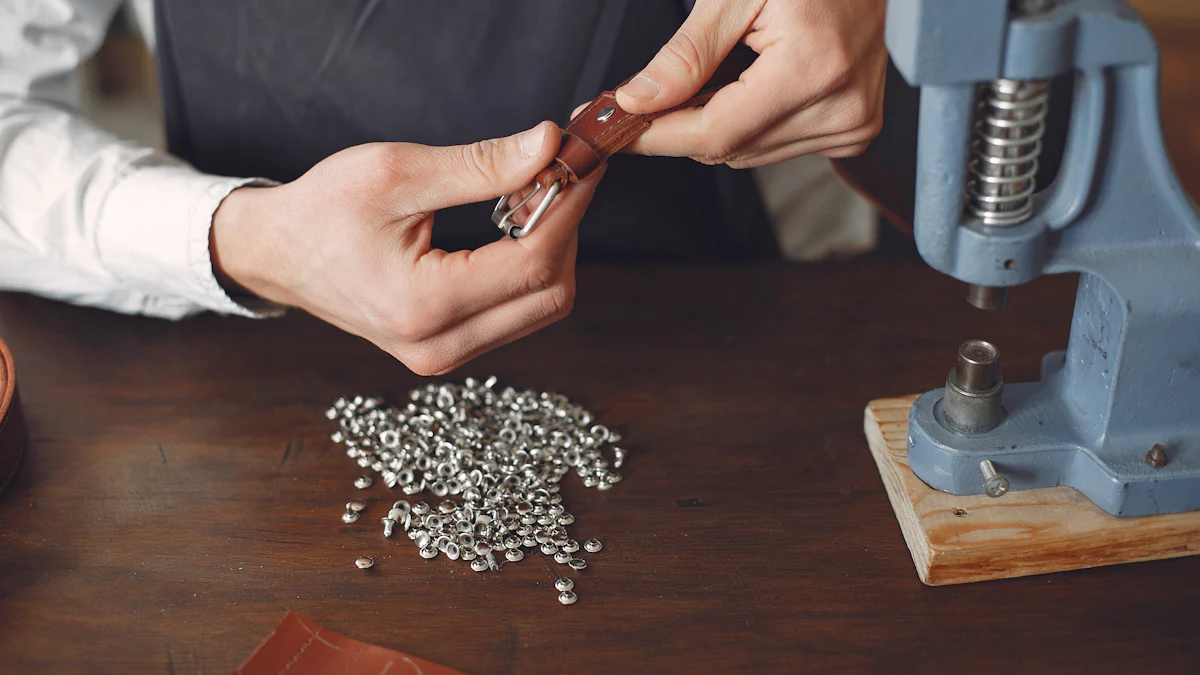How to Use Aluminum Rivets on Steel

You might wonder if aluminum rivets can be used on steel. The answer is yes, but with caution. Aluminum rivets offer excellent corrosion resistance and are lightweight, making them ideal for applications like automotive and aerospace. However, using them on steel can lead to galvanic corrosion, which weakens the connection. To use aluminum rivets effectively on steel, ensure the steel is zinc-plated or use protective coatings to minimize corrosion risks. Consider environmental factors and load requirements to ensure a secure and durable fastening solution.
Key Takeaways
- Aluminum rivets can be used on steel, but caution is necessary due to the risk of galvanic corrosion.
- To prevent corrosion, use protective coatings on both aluminum rivets and steel surfaces, or opt for zinc-plated steel.
- Evaluate environmental conditions, as high moisture levels can increase the risk of corrosion when using aluminum rivets on steel.
- Ensure the load requirements of your project are suitable for aluminum rivets, as they may not withstand heavy stress as effectively as steel rivets.
- Follow a precise installation process: clean the surface, drill holes, insert rivets, and secure them with a rivet gun for a strong connection.
- Consider the cost-effectiveness of aluminum rivets for lightweight applications, while stainless steel rivets are better for high-stress environments.
- Always inspect the connections after installation to ensure they are tight and secure, enhancing the durability of your project.
Compatibility of Aluminum Rivets with Steel
When considering the use of aluminum rivets on steel, understanding potential issues and suitable conditions is crucial. This section will guide you through these aspects to ensure a successful application.
Potential Issues
Galvanic Corrosion
Galvanic corrosion poses a significant risk when using aluminum rivets on steel. This type of corrosion occurs when two dissimilar metals come into contact in the presence of an electrolyte, such as water. The aluminum, being more anodic, tends to corrode faster than steel. According to a study published by the Williams Honors College, galvanic coupling between aluminum alloys and carbon steel can lead to accelerated corrosion in various environments. This phenomenon can weaken the joint, compromising the integrity of the structure.
Mitigation Strategies
To mitigate galvanic corrosion, you should consider several strategies:
- Use Protective Coatings: Apply a protective coating to both the aluminum rivets and the steel surface. This barrier reduces direct contact between the metals, minimizing corrosion risks.
- Zinc-Plated Steel: Opt for zinc-plated steel, which is less noble and more compatible with aluminum. This combination reduces the potential for galvanic action.
- Environmental Control: Limit exposure to moisture and other electrolytes. Keeping the joint dry can significantly reduce the risk of corrosion.
Suitable Conditions for Use
Environmental Considerations
The environment plays a vital role in the compatibility of aluminum rivets with steel. In humid or coastal areas, the risk of galvanic corrosion increases due to higher moisture levels. You should assess the environmental conditions before deciding on this combination. If the application involves exposure to harsh weather, additional protective measures become necessary.
Load and Stress Factors
Understanding the load and stress factors is essential when using aluminum rivets on steel. Aluminum rivets are lightweight and offer excellent corrosion resistance, but they may not withstand heavy loads as effectively as steel rivets. Evaluate the load requirements of your project. For applications involving high stress or heavy loads, consider alternative fastening solutions or reinforce the joint to ensure durability.
By addressing these potential issues and considering suitable conditions, you can effectively use aluminum rivets on steel. This approach ensures a secure and long-lasting connection, even in challenging environments.
Installation Process for Aluminum Rivets on Steel

When you decide to use aluminum rivets on steel, having the right tools and following a precise installation process is crucial. This section will guide you through the necessary tools and a step-by-step installation guide to ensure a secure and effective application.
Required Tools and Materials
To install aluminum rivets on steel, gather the following tools and materials:
Rivet Gun
A rivet gun is essential for installing aluminum rivets. Choose a high-quality rivet gun that suits the size of the rivets you plan to use. A manual rivet gun works well for small projects, while a pneumatic rivet gun is better for larger tasks. Ensure the rivet gun is compatible with aluminum rivets to avoid any installation issues.
Drill Bits
Drill bits are necessary for creating holes in the steel where the rivets will be inserted. Select drill bits that match the diameter of the aluminum rivets. High-speed steel drill bits are recommended for drilling into steel, as they provide durability and precision. Keep the drill bits sharp to ensure clean and accurate holes.
Step-by-Step Installation Guide
Follow these steps to install aluminum rivets on steel effectively:
Preparing the Surface
- Clean the Surface: Begin by cleaning the steel surface where the rivets will be installed. Remove any dirt, grease, or debris to ensure a strong bond.
- Mark the Drilling Points: Use a marker or pencil to mark the exact points where you will drill holes for the rivets. Ensure the marks are evenly spaced for a uniform appearance.
Inserting the Rivet
- Drill the Holes: Using the selected drill bits, carefully drill holes at the marked points on the steel surface. Maintain a steady hand to avoid misalignment.
- Insert the Rivet: Place an aluminum rivet into each drilled hole. Ensure the rivet fits snugly and is flush with the steel surface.
Securing the Rivet
- Use the Rivet Gun: Position the rivet gun over the rivet’s mandrel. Squeeze the handle to pull the mandrel through the rivet, expanding it and securing it in place.
- Check the Connection: After securing all rivets, inspect the connections to ensure they are tight and secure. Make any necessary adjustments to achieve a firm hold.
By following these steps, you can successfully install aluminum rivets on steel, ensuring a reliable and durable connection. Remember, aluminum rivets are ideal for applications where corrosion resistance and lightweight properties are essential, but they may not be suitable for high-stress environments.
Comparison with Stainless Steel and Flat Head Rivets

Advantages and Disadvantages
Aluminum vs. Stainless Steel Rivets
When choosing between aluminum and stainless steel rivets, you need to consider several factors. Aluminum rivets are generally more cost-effective. They offer good corrosion resistance and are lightweight, making them ideal for applications where weight is a critical factor. However, they lack the strength and durability of stainless steel rivets.
On the other hand, stainless steel rivets provide superior strength and durability. They are suitable for harsh environments and long-term use. If your project involves high-stress conditions or exposure to corrosive elements, stainless steel rivets are the better choice. However, they come at a higher cost compared to aluminum rivets.
Aluminum vs. Flat Head Rivets
Comparing aluminum rivets with flat head rivets involves understanding their specific applications. Aluminum rivets are versatile and can be used in various settings due to their lightweight and corrosion-resistant properties. They are easy to install and remove, making them suitable for temporary or adjustable connections.
Flat head rivets, however, are designed for applications where a flush surface is required. They provide a smooth finish, which is essential in certain aesthetic or functional applications. While aluminum rivets offer flexibility, flat head rivets ensure a neat and seamless appearance. Your choice depends on whether you prioritize ease of use or a clean finish.
Application Suitability
Cost Considerations
Cost plays a significant role in selecting the right rivet for your project. Aluminum rivets are generally more affordable, making them a cost-effective option for large-scale projects or budget-conscious applications. If you need to manage costs without compromising on quality, aluminum rivets are a viable choice.
Stainless steel rivets, while more expensive, offer long-term value due to their durability and strength. If your project demands longevity and resilience, investing in stainless steel rivets can save costs in the long run by reducing maintenance and replacement needs.
Durability and Strength
Durability and strength are crucial factors in rivet selection. Stainless steel rivets excel in these areas, providing robust connections that withstand high loads and harsh conditions. They are ideal for structural applications where safety and reliability are paramount.
In contrast, aluminum rivets offer adequate strength for less demanding applications. They are suitable for projects where weight reduction is a priority, such as in aerospace or automotive industries. While not as strong as stainless steel, aluminum rivets provide sufficient durability for many everyday uses.
By understanding these comparisons, you can make informed decisions about which type of rivet best suits your project’s needs. Whether you prioritize cost, strength, or appearance, each rivet type offers unique advantages to consider.
When using aluminum rivets on steel, you must consider several key points to ensure a successful application. Aluminum rivets offer excellent corrosion resistance and are lightweight, making them ideal for weight-critical applications like automotive and aerospace. However, galvanic corrosion can occur between steel and aluminum, weakening the connection. To prevent this, select compatible materials and use protective coatings.
For specific applications, aluminum rivets work best where weight and corrosion resistance are priorities. Avoid using them in high-stress environments or with stainless steel to prevent fastener failure. By understanding these factors, you can make informed decisions for your projects.
FAQ
How do you choose metal rivets for a steel project?
Selecting the right metal rivets for your steel project involves understanding the materials and conditions involved. You should consider the type of steel and the environment in which the rivets will be used. For instance, if the steel is zinc-plated, aluminum rivets might be suitable due to their compatibility. However, for projects requiring high strength and durability, stainless steel rivets are often preferred. This article provides detailed guidance on choosing the appropriate metal rivets for different steel materials.
Can you use aluminum rivets on steel?
Using aluminum rivets on steel can lead to galvanic corrosion, which compromises the fastener’s integrity. The aluminum corrodes when in contact with steel, especially in the presence of moisture. This corrosion can cause the rivets to fail, leading to structural issues. Therefore, while it is technically possible, it is generally not recommended to use aluminum rivets on steel without proper precautions.
What are the risks of galvanic corrosion with aluminum rivets?
Galvanic corrosion occurs when two dissimilar metals, such as aluminum and steel, come into contact in the presence of an electrolyte like water. This process causes the more anodic metal, aluminum in this case, to corrode faster. The corrosion weakens the joint, potentially leading to failure. To mitigate this risk, you can use protective coatings or ensure the steel is zinc-plated.
What tools do you need to install aluminum rivets on steel?
To install aluminum rivets on steel, you need a rivet gun and drill bits. A high-quality rivet gun ensures proper installation, while drill bits create the necessary holes in the steel. Choose drill bits that match the rivet size for precise and clean holes. High-speed steel drill bits are recommended for their durability and precision.
How do you prevent corrosion when using aluminum rivets on steel?
Preventing corrosion involves several strategies. You can apply protective coatings to both the rivets and the steel surface to minimize direct contact. Using zinc-plated steel reduces the potential for galvanic action. Additionally, controlling the environment by limiting exposure to moisture helps reduce corrosion risks.
Are aluminum rivets suitable for high-stress applications?
Aluminum rivets are lightweight and offer good corrosion resistance, but they may not withstand heavy loads as effectively as steel rivets. For high-stress applications, stainless steel rivets provide superior strength and durability. Evaluate the load requirements of your project to determine if aluminum rivets are appropriate.
What are the advantages of using aluminum rivets?
Aluminum rivets are cost-effective and lightweight, making them ideal for applications where weight is a critical factor, such as in automotive and aerospace industries. They offer good corrosion resistance and are easy to install and remove, which is beneficial for temporary or adjustable connections.
How do aluminum rivets compare to flat head rivets?
Aluminum rivets are versatile and suitable for various settings due to their lightweight and corrosion-resistant properties. Flat head rivets, however, are designed for applications requiring a flush surface. They provide a smooth finish, essential for certain aesthetic or functional applications. Your choice depends on whether you prioritize ease of use or a clean finish.
What are the cost considerations when choosing rivets?
Cost plays a significant role in rivet selection. Aluminum rivets are generally more affordable, making them a cost-effective option for large-scale projects. Stainless steel rivets, while more expensive, offer long-term value due to their durability and strength. Consider your project’s budget and longevity requirements when choosing rivets.
Can you use aluminum rivets with stainless steel?
Mixing aluminum rivets with stainless steel is not advisable due to the risk of galvanic corrosion. The aluminum will corrode when in contact with stainless steel, compromising the fastener’s integrity. To avoid this, use compatible materials or apply protective measures to prevent direct contact.
Post time: Dec-23-2024
